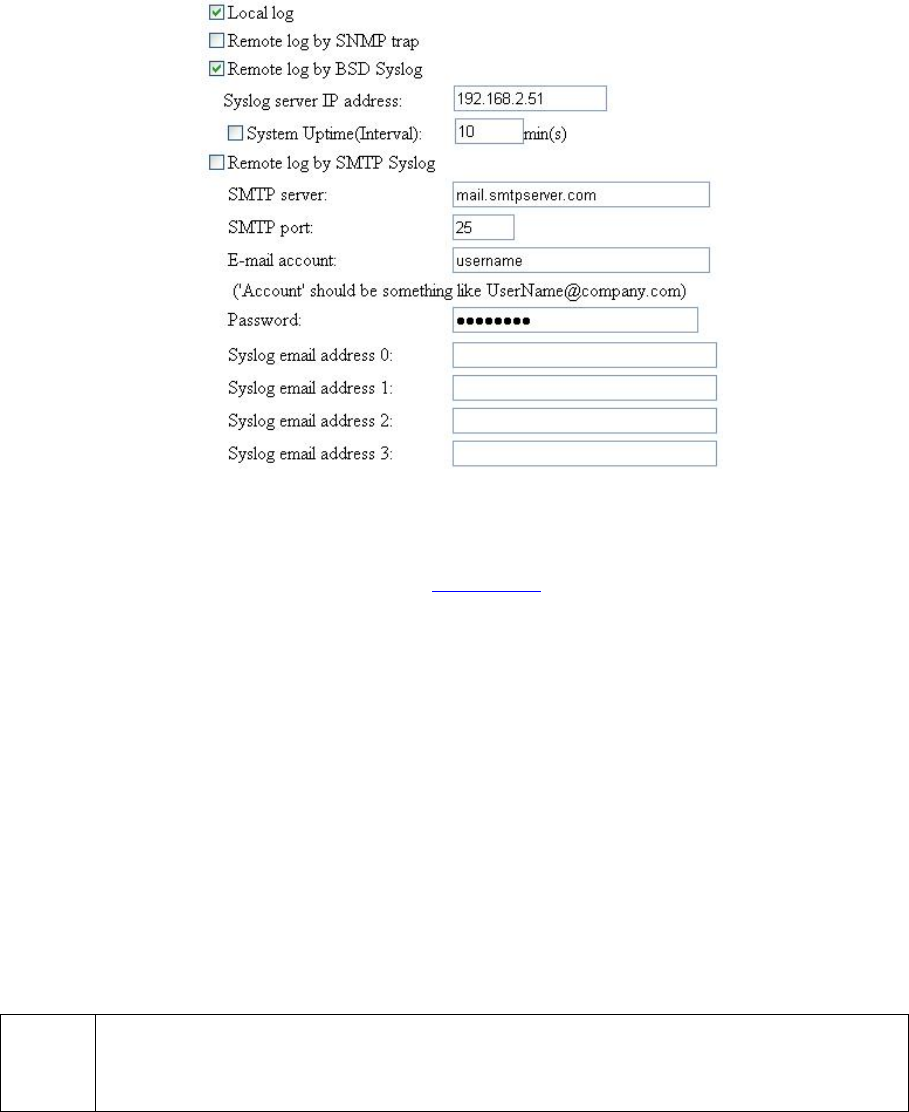
63
UPnP (Universal Plug and Play) enables a Windows XP user to automatically discover peripheral de-
vices by HTTP. When the UPnP functionality is enabled, you can see the Router in My Network
Places of Windows XP. The Router can be given a friend name that will be shown in My Network
Places. Double-clicking the icon in My Network Places that stands for the Router will launch the de-
fault Web browser for you to configure the Router.
2.15.2.3. System Log
Fig. 105. System log settings.
System events can be logged to the on-board RAM of the IWE3200-H (Local log) or sent in the form
of SNMP trap (Remote log by SNMP trap) or BSD Syslog
(Remote log by BSD Syslog) to a remote
SNMP trap monitoring server or remote Syslog server, respectively. See the next subsection for more
information about SNMP trap settings. Set the IP address of the Syslog server in the Syslog server IP
address text box.
The system events are divided into the following categories:
General: system and network connectivity status changes.
Built-in AP: wireless client association and WEP authentication status changes.
MIB II traps: Cold Start, Warm Start, Link Up, Link Down and SNMP Authentication
Failure.
RADIUS user authentication: user authentication status changes.
Managed LAN device: Land device status changes
NOTE:
The SNMP Authentication Failure trap is issued when using an incorrect community
string to manage the Router via SNMP and the SNMP MIB II OID, snmpEnableAu-
thenTraps, is enabled (disabled by default).


















